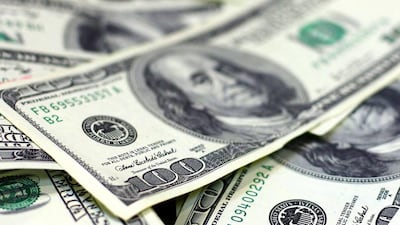As I have maintained, improving US data will continue to help future US dollar forecasts and vice versa.
Since my last piece earlier this month, perhaps the biggest economic release was the US non-farm payrolls employment rate. Although average hourly earnings came in slightly weaker than expected, payrolls grew to 224,000 (versus an expected 160,000). The better than expected figures immediately saw fresh dollar buying — and took other assets lower.
FX and commodities have been trading in their current ranges this month. After dropping as low as 1.1259 on the Dubai Gold & Commodities Exchange (DGCX), the EUR/USD contract for delivery in September has recovered back above 1.13. Following similar pricing action, the British pound contract dropped as low as 1.2485 on DGCX before moving back above 1.2550 levels. Gold for July delivery also dropped to 1389 levels before moving comfortably back above 1400 levels. All these assets have followed an all too similar trend due largely to US dollar volatility.
Looking at the economic calendar ahead, I am watching for the second quarter US GDP figure due out on July 26. Expected to come in at 1.9 per cent (well below the previous 3.1 per cent), this piece of data will be most important for the US Federal Reserve and its rate decision meeting that follows on July 30 and 31.
Markets are largely expecting a cut at this coming meeting, but there is a small chance of holding rates steady. The Fed finds itself in a sticky spot; after talking up the chances of a rate cut, it would be catching markets off guard if it were to hold rates unchanged, and this would also send the markets an incorrect message about the decision-making and communication policy within the Fed.
The second quarter GDP will be a key indicator in determining which way the Fed will go. If the GDP data comes in healthy, this could give the Fed ammunition to stand pat against President Donald Trump’s overtures for a low-interest rate environment for the US. If, however, that figure comes well below 2 per cent this could flame speculation that the Fed will cut rates. This waiting game will see the dollar continue to trade in the current ranges before we see a more concrete direction following the Federal Open Market Committee meeting.
While many asset classes have been range bound, US equity markets have been on a tear this month. The Dow Jones made history, breaking through 27000 levels, above which we are seeing some consolidation. Similarly, the S&P 500 index is trading at new records, above 3000. Clearly these markets took a lot of confidence in the jobs report — and are pricing in a US rate cut.
Across the pond, it’s going to be another big few weeks for the euro. As diluted as Fed policy may seem, the ultra-dovish policy of the European Central Bank and its president Mario Draghi towards future rates is obvious. It is a question of if and when the ECB will pull the trigger on additional stimulus measures for the euro zone. The ECB will meet on July 25, which could be the earliest it hints at additional easing measures. If the bank holds off for another month, this could see a fresh influx of buying coming into EUR/USD. I expect to see strong buying support coming into EUR/USD at 1.11 levels.
I still feel opportunities exist in DGCX’s British pound contract. Selling pressure should see the contract drop back towards 1.2450 levels as political and Brexit uncertainty is set to pick up in the summer months.
Finally, following an amazing run last month, gold is seemingly spending July stabilising above $1,400 levels. Long positions on DGCX would make sense at $1,380 or lower with upsides still capped at $1,440.
Gaurav Kashyap is a market strategist at Equiti Global Markets. The views and opinions expressed in this article are those of the author and do not reflect the views of Equiti


